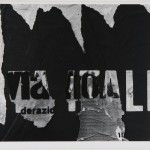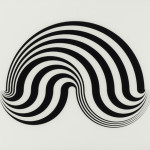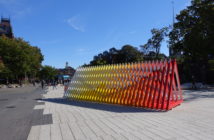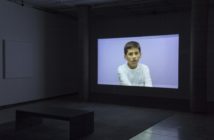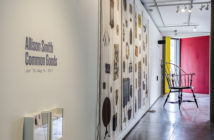But to see how these artists got their connection to Harvard, I think we'd have to rewind the tape a little more and focus on the Institute of Contemporary Art's role in our region. Heading back to 1936, the MoMA (nicknamed Harvard West) founded the original Big Contemporary Museum Franchise (take that Guggenheim!) in the Boston Museum of Modern Art. The first gallery space at 114 State St. was provided by the Harvard museums and in the early years, the connections between Harvard, the MoMA, and BMoMA were thick. (Wikipedia actually has a good attempt at recording all the different names and locations that the ICA has used)
By 1939 the BMoMA had cut ties with MoMA and changed its name to the Institute of Modern Art. Then in 1948, the president and director of the institute released a limited edition document titled "Modern Art" and the American Public. Effectively it was an announcement of the museum's decision to change its name to the Institute of Contemporary Art plus a stormy condemnation of what modern art had become. The change from modern to contemporary was supposed to disconnect the Modern from the modern; specifically, they tried to distinguish the polyvocal international art that the ICA was championing from the Modern art that was mostly inherited from France. As things like impressionism became something historical rather than something unpredictable and vibrant, the ICA thought it was time to declare the Modern as something from our shared past.
Needless to say, this did not go over so well. Instead of the "Boston Affair" being taken as an attempt at protecting the contemporary art world from becoming tedious, self-replicating mannerism, "Modern Art" and the American Public became a lightning rod that galvanized artists working in a Modernist mode. They believed that the only other option than the art that they made was a petty regionalism where conservative images of bucolic farm lands would end the internationalism that had developed in America as a result of expatriation during the World Wars.
To me, the works on display in Circa 1963 are the descendants of this discord.
This is a long and involved story that can't be distilled down to a few sentences, but Boston instantly magnified its reputation as a conservative town for art when it picked a fight with the MoMA. It became the place that Modern artists thought was run by a mixture of Currier & Ives and the Hudson River School. The damage was done, and over the years, our institutions have worked to break this reputation in various ways, including Harvard's connection to the artists in Circa 1963. Their choice to champion the avant-garde was a political statement. Even if Harvard wasn't actively considering the ICA's statement from more than ten years earlier, those events made long-lasting impressions throughout the region.
There are other coincidences here. The first show that the Institute exhibited as the ICA was a show about Le Corbusier, who designed the Carpenter Center. It was the first US exhibition of his work and the Carpenter Center is his only building in North America. Circa 1963 exhibits a wider history than just Harvard's. It exhibits how the friction caused by the various Modernisms created different histories by trying to create different futures. Postmodernism didn't fracture art history, art history has always incorporated conflict.
It's hard to view the show without looking at it through a historical lens. The work doesn't feel as alive as it once did. People like Josef Albers are our cultural baggage like the Impressionists were for him. Instead, the works collected here function best as a survey of the complicated experiments that were introduced to art in the 1960's. From Bridget Riley's Op-Art to Yoko Ono's conceptual happenings (see the Brooklyn Musuem's 6 Years exhibit for more on this historical thread) to Aaron Siskind's expressionist photographs-- this show has collected together a portion of art history that I am very interested in, and of course highly recommend. My one wish is that the exhibition had an accompanying text that placed these works into some historical context rather than just saying that the artists were all working at Harvard around the same time. There is more here than that.
- Aaron Siskind, Rome, Gelatin silver print, 1963.
- Bridget Riley, Untitled (Fragment 5), Screen print printed on the verso of an acrylic sheet, 1965.


